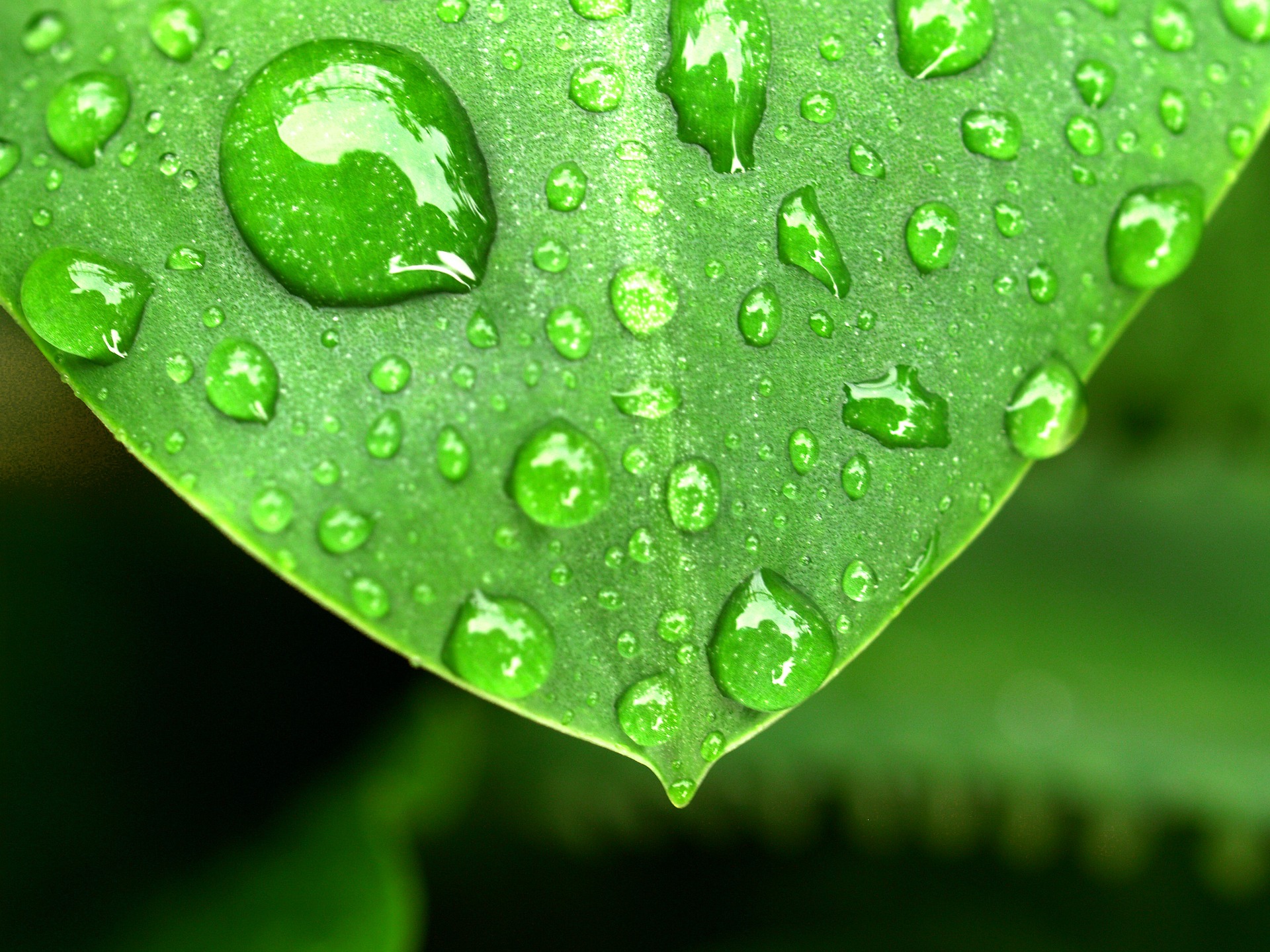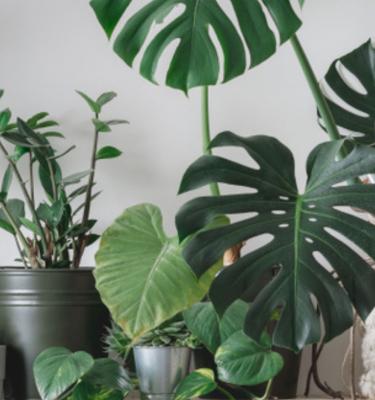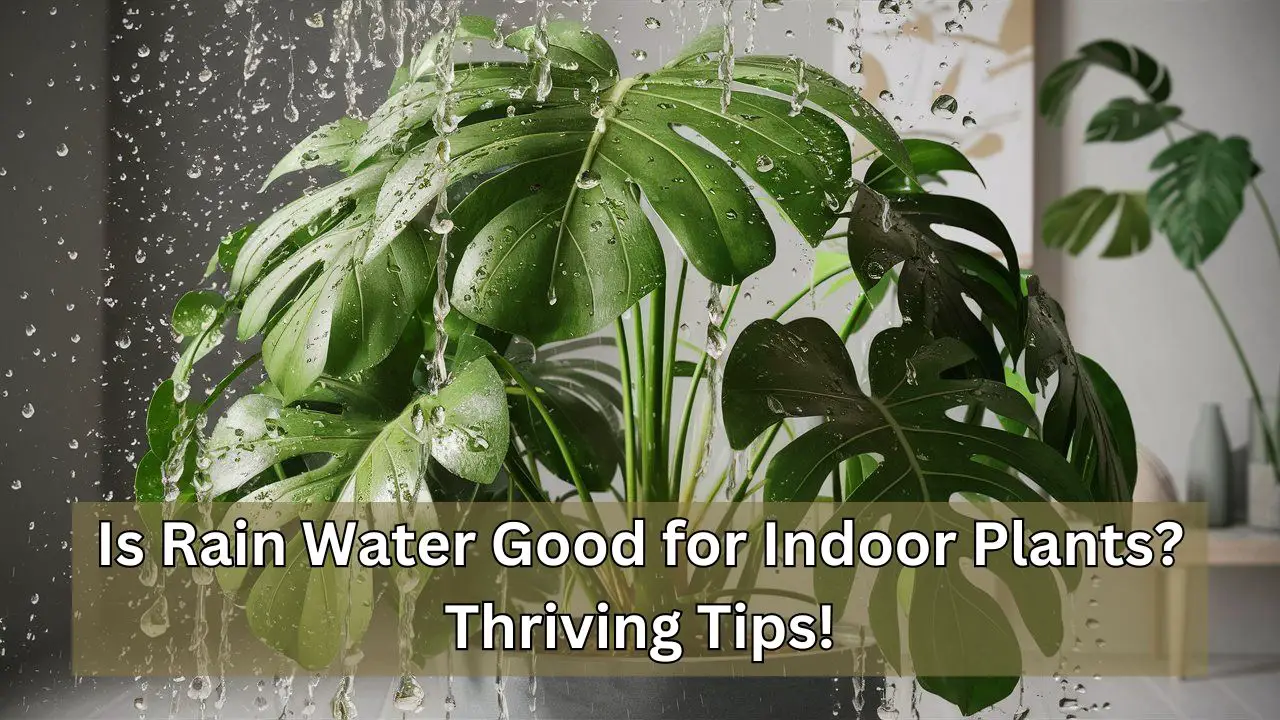Yes, rainwater is good for indoor plants. It contains fewer chemicals and is generally softer than tap water.
Rainwater benefits indoor plants by providing them with natural hydration free from added chemicals like chlorine and fluoride, commonly found in tap water. This soft water helps prevent the build-up of salts and minerals in the soil, promoting healthier root systems.
Collecting rainwater is also an eco-friendly choice, reducing reliance on municipal water supplies. Indoor gardeners can gather rainwater using simple setups like rain barrels or containers placed outside during rainfall. By using rainwater, plant enthusiasts can ensure their indoor greenery thrives, offering lush, vibrant growth. With its natural composition, rainwater is an excellent, sustainable option for watering indoor plants.
Rain Water Vs. Tap Water: What’s Best For Your Green Friends?
Watering indoor plants is crucial for their growth. The type of water you use impacts their health. This section explores whether rain water or tap water is better for your plants.
Chemical Differences
Rain water is naturally soft and free from chemicals. Tap water often contains chlorine, fluoride, and salts. These chemicals can harm sensitive plants.
Consider the following table to understand the chemical differences:
| Water Type | Chlorine | Fluoride | Salts |
|---|---|---|---|
| Rain Water | None | None | Minimal |
| Tap Water | Present | Present | Present |
Impact On Plant Growth
Plants thrive better with rain water. The absence of chemicals in rain water makes it ideal.
Here are some benefits of using rain water:
- Promotes healthy root growth
- Prevents leaf burn
- Encourages better nutrient absorption
Tap water, with its chemicals, can lead to poor plant health. Chlorine can damage root systems. Fluoride may cause leaf tips to turn brown.
Using rain water can make a noticeable difference. Your plants will appear healthier and more vibrant.
The Science Behind Rain Water’s Magic
Rainwater has unique properties that make it ideal for indoor plants. It offers various benefits that tap water cannot match. Understanding the science behind it can help you make the best choice for your plants.
Natural Composition
Rainwater is naturally soft and free from chemicals. It does not contain the salts and minerals found in tap water. These elements can build up in the soil over time.
Rainwater often contains small amounts of nitrogen. Nitrogen is essential for plant growth. It helps plants develop lush, green leaves. This natural fertilizer can make a big difference in plant health.
Benefits For Soil And Plants
Rainwater has a neutral pH level. This makes it ideal for most indoor plants. It helps maintain the natural balance of the soil.
- Improved Soil Aeration: Rainwater helps to keep soil loose and airy. It prevents soil compaction, which can harm plant roots.
- Better Nutrient Absorption: Plants can absorb nutrients more efficiently with rainwater. This leads to stronger and healthier growth.
- Reduced Salt Build-up: Unlike tap water, rainwater does not leave behind salts. This prevents salt build-up, which can damage plant roots.
Rainwater benefits both soil and plants. It provides essential nutrients and keeps the soil healthy.
| Feature | Rainwater | Tap Water |
|---|---|---|
| Softness | Naturally Soft | Often Hard |
| pH Level | Neutral | Varies |
| Chemicals | Free from Chemicals | Contains Chlorine and Fluoride |
Using rainwater for indoor plants can have significant benefits. It is free from harmful chemicals and promotes healthier growth. Your indoor plants will thrive with this natural resource.
Collecting And Storing Rainwater: A Step-by-step Guide
Rainwater is a fantastic resource for your indoor plants. It is free and natural. Plus, it often contains fewer chemicals than tap water. This guide will help you collect and store rainwater for your indoor plants. Follow these steps to ensure the best results.
Tools And Techniques
Start with the right tools. Here’s what you’ll need:
- Rain Barrel: A large container for collecting rainwater.
- Gutter System: Directs rainwater into the barrel.
- Mesh Screen: Keeps debris out of the water.
- Watering Can or Hose: For transferring water to plants.
Follow these steps to collect rainwater:
- Place your rain barrel under a downspout.
- Attach the gutter system to guide water into the barrel.
- Cover the barrel with a mesh screen.
- Wait for rain to fill the barrel.
Storage Tips To Maintain Quality
Proper storage keeps rainwater fresh for your plants. Here are some tips:
- Keep the Barrel Covered: Prevents debris and pests from entering.
- Store in a Cool Place: Reduces algae growth.
- Use Quickly: Use rainwater within a week for best results.
- Clean Regularly: Clean the barrel every few months.
Follow these storage tips to ensure your plants get the best water. Your plants will thrive with clean, natural rainwater.

Credit: www.goodearthplants.com
Safety First: Ensuring Rainwater Is Safe For Indoor Use
Using rainwater for indoor plants can be a great idea. But, you must ensure the water is safe. This means checking for contaminants and purifying the water. Let’s dive into the details to keep your plants healthy.
Contamination Concerns
Rainwater can collect dirt and pollutants from the air. This includes dust, smoke, and chemicals. When rainwater runs off roofs, it can pick up additional contaminants. These might include bird droppings, leaves, and other debris.
To ensure your plants stay healthy, it’s important to filter out these contaminants. Unfiltered rainwater may harm your indoor plants. Keeping the water clean is essential for their growth and well-being.
Purification Methods
You can use several methods to purify rainwater. Here are some effective techniques:
- Boiling: Boil the rainwater to kill bacteria and viruses. This is a simple and effective method.
- Filtration: Use a water filter to remove dirt and debris. Filters can catch tiny particles and make the water cleaner.
- UV Sterilization: UV light can kill harmful microorganisms. This method is quick and efficient.
- Activated Carbon: Use activated carbon filters to remove chemicals and pollutants. This method helps in purifying the water for your plants.
Below is a table summarizing these methods:
| Method | Effectiveness | Best For |
|---|---|---|
| Boiling | High | Killing bacteria and viruses |
| Filtration | Medium | Removing dirt and debris |
| UV Sterilization | High | Killing microorganisms |
| Activated Carbon | High | Removing chemicals |
By using these methods, you can ensure rainwater is safe for your indoor plants. Clean water helps plants grow strong and healthy. Make sure to purify rainwater before using it for your plants.
Optimizing Rainwater Usage For Indoor Plants
Indoor plants thrive on natural resources, and rainwater can be a great asset. Optimizing the use of rainwater ensures your plants get the best care. This guide helps you understand how to use rainwater effectively for indoor plants.
Frequency And Quantity
Watering indoor plants with rainwater depends on several factors. The frequency should match the plant’s needs and the room’s humidity levels. Overwatering can harm plants, while underwatering can stunt growth.
| Plant Type | Watering Frequency |
|---|---|
| Succulents | Once every 2 weeks |
| Ferns | Twice a week |
| Orchids | Once a week |
Monitor your plants regularly. Check the soil moisture before watering again. Using a soil moisture meter can help in determining the right time to water.
Adjusting For Different Plant Types
Each plant type has unique water requirements. Knowing these needs helps in optimizing rainwater usage.
- Succulents: These plants store water in their leaves. Water sparingly.
- Ferns: Ferns need more frequent watering. Ensure the soil is moist.
- Orchids: Orchids prefer well-draining soil. Allow the soil to dry out between waterings.
Group plants with similar water needs together. This helps in managing watering schedules efficiently.
Use rainwater collection systems. Store rainwater in clean containers. Filter the water if necessary to remove debris.
Always use room temperature rainwater. Cold water can shock the plants. Let collected rainwater sit for a while to reach room temperature.
Following these tips ensures your indoor plants get the best care with rainwater.
The Impact Of Rainwater On Common Houseplants
Using rainwater for indoor plants offers many benefits. It is free from chemicals found in tap water. This can enhance the health and growth of your plants. Let’s explore how rainwater impacts various common houseplants.
Succulents And Cacti
Succulents and cacti thrive on minimal water. Rainwater provides minerals that promote growth. Tap water can cause salt build-up in the soil. This hinders the plant’s ability to absorb nutrients. Rainwater helps flush out these salts.
Important Tip: Ensure your succulents have proper drainage. Overwatering can lead to root rot.
Tropical Plants
Tropical plants love the natural minerals in rainwater. These plants mimic their natural humid environments. Tap water often contains chlorine and fluoride. These chemicals can damage tropical plant leaves.
Example: Plants like the Monstera and the Peace Lily benefit greatly. They grow healthier and lush with rainwater.
Herbs And Edibles
Herbs and edible plants flourish with rainwater. It is rich in nitrogen. This essential nutrient promotes leafy growth. Tap water often lacks this natural nitrogen content.
Consider these common herbs:
- Basil
- Mint
- Parsley
Rainwater helps these herbs grow more flavorful and vibrant.
| Plant Type | Rainwater Benefit | Important Notes |
|---|---|---|
| Succulents and Cacti | Flushes out salts | Ensure proper drainage |
| Tropical Plants | Provides natural minerals | Avoid tap water chemicals |
| Herbs and Edibles | Rich in nitrogen | Enhances flavor |
Troubleshooting: When Plants Don’t Respond Well To Rainwater
Rainwater is often the best choice for watering indoor plants. Sometimes, plants don’t respond well to it. This guide will help you troubleshoot and find solutions.
Identifying Issues
First, check for signs of poor plant health. Yellowing leaves, drooping stems, and stunted growth are key indicators. Look for these symptoms:
- Yellowing leaves: This can suggest a nutrient imbalance.
- Drooping stems: Might indicate overwatering or poor drainage.
- Stunted growth: Could mean a lack of essential nutrients.
Examine the soil and ensure it’s not compacted. Pests and diseases can also affect plant health. Keep an eye out for unusual spots or pests.
Solutions And Alternatives
Once issues are identified, explore solutions. Here are some alternatives:
| Issue | Solution |
|---|---|
| Yellowing leaves | Test soil pH and adjust nutrients. |
| Drooping stems | Improve soil drainage and reduce watering frequency. |
| Stunted growth | Use balanced fertilizers for better growth. |
Consider using filtered or distilled water if rainwater causes issues. Boil rainwater to remove impurities before use. Rainwater collection barrels should be clean to avoid contamination.
Regularly inspect plants and adjust care routines as needed. Healthy plants are more resilient to environmental changes.

Credit: www.lovethegarden.com
Beyond Watering: Other Uses Of Rainwater In Plant Care
Rainwater offers more than just hydration for indoor plants. It provides other benefits that enhance plant health. Discover how rainwater can aid in plant care beyond watering.
Humidity Control
Indoor plants thrive in environments with proper humidity. Rainwater helps increase humidity around plants. Place bowls of rainwater near your plants. As water evaporates, it boosts humidity. This mimics their natural habitat, promoting growth.
Foliar Feeding
Foliar feeding involves spraying leaves with a nutrient solution. Rainwater is ideal for this. It is free from chemicals found in tap water. Mix rainwater with liquid fertilizer. Spray this mix on your plant leaves. This method delivers nutrients directly to the plant. It can be more effective than soil feeding.
Frequently Asked Questions
Is Rainwater Ok For Indoor Plants?
Yes, rainwater is excellent for indoor plants. It contains fewer chemicals than tap water, benefiting plant growth.
Should I Put My Indoor Plants In The Rain?
Yes, putting indoor plants in the rain can be beneficial. Rainwater provides natural nutrients and washes away dust. Ensure the plants are not overwatered and have proper drainage.
How Long Is Rain Water Good For Plants?
Rainwater is good for plants for up to one week. After that, it may become stagnant and less beneficial.
What Is The Best Water For Indoor Plants?
The best water for indoor plants is room-temperature, distilled or filtered water. Avoid using hard water with high mineral content.
Conclusion
Rainwater offers numerous benefits for indoor plants, such as essential nutrients and a balanced pH. It’s a natural and eco-friendly option. Collect rainwater to boost plant health and growth. Always ensure proper storage to avoid contamination. Embrace rainwater for thriving, vibrant indoor greenery.
Your plants will thank you!

My mission is to help you bring the beauty of nature indoors with expert advice, detailed plant care guides, and creative design ideas.




